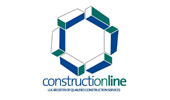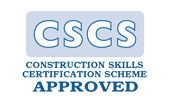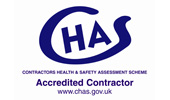Self Leveling Screed Thickness?
Self Leveling Screed Thickness
I’m Andy Parkin, Managing Director of the Multi-Award Winning Speed Screed. I’m here today to talk about self leveling screed thickness.
When we talk about self-leveling, if the truth be known, there isn’t a self-leveling product out there because literally you can pour a load of screed in the corner of a room and it wouldn’t level itself. You have products that are “self-smoothing” and “self-compacting”, but I don’t believe that there is really a true self-leveling product.
You can use a trowel, (a notched trowel) to lay some of the smoothing compounds.
When you look at the minimum thickness for these products, you need to look at the different types of floor construction that the screed is to be laid onto.
Bonded
Bonded is where the screed is laid directly onto the substrate. The substrate could be in situ concrete, or precast beam and block. A bonding agent is used between the screed and substrate.
Unbonded
Unbonded is when you have a membrane in between the substrate and the screed.
Floating
Lastly, there is floating construction so that is when you have acoustic insulation or thermal insulation and the screed is going on top there. Effectively the screed is floating.
The minimum thicknesses will change depending on what the type of substrates the screed is being laid onto.
Bonded Minimum’s
When we are bonding to a substrate, we need to make sure that it is clean, sound, and there is no dust. It may need some mechanical preparation. We also need to check the substrate is actually dry. An in situ concrete slab can hold moisture for up to 12 months. It may be that a moisture reading needs to be taken to check if the substrate is actually dry.
- A smoothing compound can go down to feather edge (1mm), and it could go up to typically 10mm but there are products that will go up to 50mm. You would question the cost effectiveness of using those products at thicker depths.
- TS15 calcium sulphate, can be bonded from 15mm.
Unbonded Minimum’s
- TS15 calcium suplhate can be laid unbonded at 15mm
Floating Minimum’s
When laying screed on top of insulation, a membrane between the screed and insulation is recommended. If you are laying on top of foil-backed insulation there is a possible reaction that produces hydrogen bubbles when a membrane is not used. Of course you don’t want to lose any of the product either, and a membrane just nicely retains the material where exactly it should be.
- Caclium Suplate Screed 35mm domestic and 40mm commercially.
Heated Screed
If you introduce heating pipes into the screed, using the calcium sulphate, flow screed, or liquid screed (the binder is calcium sulphate).
- If you have heating pipes with a 15 or 16mm diameter, the minimum coverage of self leveling screed over the pipes is 20mm (35/36mm total with the pipes). There are tray systems with smaller pipes, that requires only 20mm total depth of screed.
I hope this information has been helpful, if you have any further questions please contact us. We love to help!
Our Accreditations
About Speed Screed
Speed Screed Limited was founded on the key principle of providing first-class customer service. It has since built itself an impressive reputation for delivering high-quality projects across the United Kingdom.
The company’s success is built on its belief in quality work, attention to detail, on-time completion, strong working partnerships and the recruitment of top-level staff. about us >








